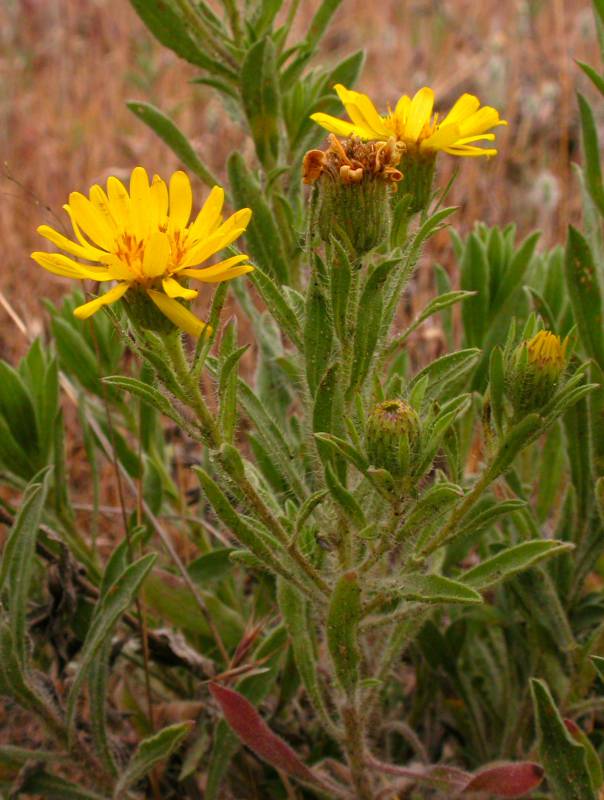Hosted by the University of Washington Herbarium, Burke Museum
Publication: Novon. 4: 54. 1994.
Origin: Native
Herbarium search: CPNWH
Notes: FNA20:"Variety minor is distinguished by its usually narrowly to broadly oblancelate distal cauline leaves (sometime oblong or ovate) and moderately glandular and hispido-strigose indument. The leaf bases are usually narrowly to broadly cuneate or attenuate (rarely rounded). Distal leaf faces usually have about 10–50 hairs/mm 2 and about 4–20 glands/mm 2 . The variety is the most variable in the species and includes some local distinctive morphotypes that grade into other forms. Plants intermediate between this and all other varieties occur in areas where the ranges are sympatric, and they make infraspecific taxonomy of the species difficult. The variety has been incorrectly referred to as var. hispida (a later synonym) in most floras.
The status of Heterotheca barbata (Rydberg) Semple (Chrysopsis barbata Rydberg), the Spokane goldenaster, is uncertain. J. C. Semple (1996) treated it as a separate species to draw attention to the problem; a detailed description based on the type and detailed illustrations were included. It is known from the type collection along the Spokane River Valley east of Spokane, Idaho, and two down-river, atypical collections (Benton and Spokane counties, Washington). It flowers in July (sometimes August). It is similar to H. villosa var. minor, but differs in having lanceolate-elliptic distal cauline leaves (34–38 × 8–9 mm) that are little reduced distally, long branches (each with one to a few large heads), and disc corollas with a few, very long hairs on the tube. Further work is needed to increase the number of specimens available for a detailed comparison with H. villosa var. minor in order to clarify whether H. barbata warrants species level recognition, should be included in H. villosa as a variety, or placed in synonymy under var. minor."
Last updated 12/5/2008 by David Giblin.

